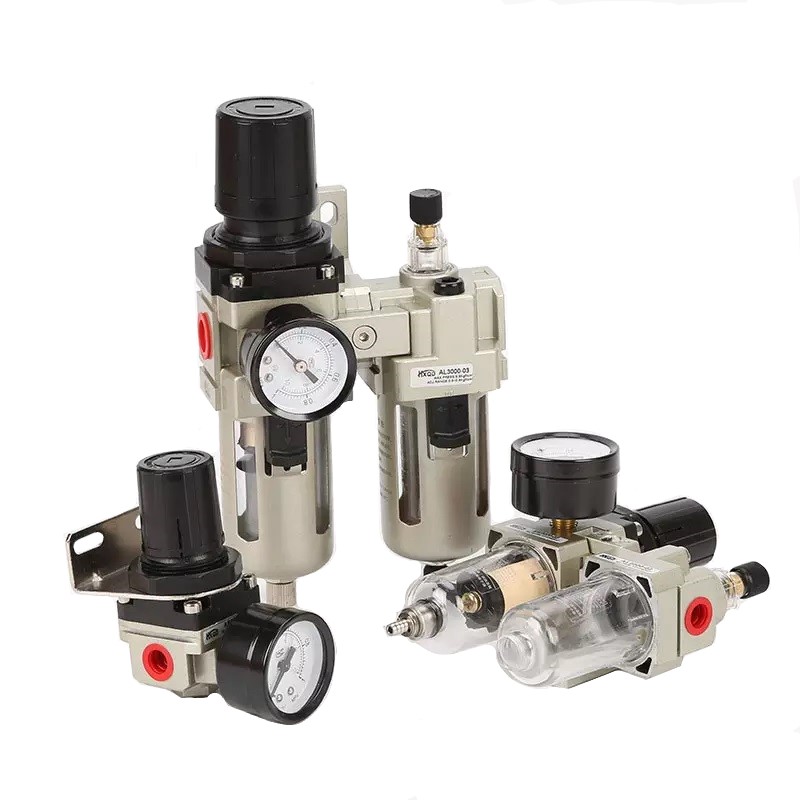The FRL combination unit is essential since it helps to provide clean, high-quality air, increase the reliability of pneumatic tools, and reduce power consumption.
What is FRL Air Treatment?
Pneumatic FRL units or air treatment units are essential in protecting downstream equipment from the damaging effects of compressed air that leaves the compressor. In pneumatics, the air that comes out of the compressor is dirty, wet, and over-pressurized, which can damage the operation of downstream equipment, including valves, air tools, and cylinders. Thus, there is a need to apply proper air treatment before and after compression. With that in mind, in pneumatics, compressed air is treated through air treatment units, known as FRL combination units.
FRL air treatment is a compressed air system combining a filter, regulator, and lubricator units into one block. It’s used to generate clean air, improve its quality, control pressure, and lubricate flow to ensure proper pneumatic system operation and increase the longevity of pneumatic products.
3 Units of FRL
There are three components of the pneumatic FRL unit – filter, regulator, and lubricator. These units can be bought separately or as one unit.
First of all, you should understand the air requirements of your pneumatic system to make the right purchase of FRL units. Install an FR (filter and air pressure regulator) if your pneumatic tools are self-lubricating. If not, you should choose an FRL unit that includes lubrication.
- Filter — The first step to improving air quality is filtration. Filters remove moisture, dirt, and other contaminants from the pneumatic system. Filters can be attached to semi-automatic, manual, or automatic drainage systems to eliminate filtered contaminants.
- Air Regulator — Air pressure regulators regulate the air pressure of a pneumatic system so that downstream equipment will not exceed its maximum pressure. They provide a constant air pressure, minimizing variations. The air regulators are divided into two types: relieving and non-relieving. Reducing air compressor regulators let excess air escape through a built-in vent whenever there is a pressure surge. In contrast, non-relieving air compressor regulators can’t release the pressure and need a secondary mechanism for doing that.
- Lubricator — Lubricators release controlled amounts of oil into the compressed airflow. They help to lubricate moving parts of pneumatic tools and equipment, reduce internal friction, protect against wear, and increase their lifespan. There are two lubricator types – oil-fog (for short distances) and micro-fog (for long distances).
Benefits of Pneumatic FRL Unit
Here are the benefits of the FRL combination unit:
- Provide higher reliability of pneumatic tools
- Ensure clean and high-quality air
- Provide constant pressure
- Increase the pneumatic component lifespan
- Reduce power consumption
If you want to purchase the FRL air treatment unit for the best experience with your pneumatic system, opt for HAK Fluid Power Equipment LTD, based in Toronto, Canada.
-

Air Preparation (FRL - Air Filters, Pressure Regulators, Lubricators) Pressure Range 5 PSI ~ 125 PSI (42)
-

FRL Air Treatment SERIES PRESSURE RANGE 7.25 - 135 PSI (10)
-

HEAVY DUTY / HIGH PRESSURE Compressed Air Treatment. (3)
-

HIGH Pressure AIR Regulator Pressure Range 7.25 - 500 PSI (6)
-

Pressure Gauges (7)





